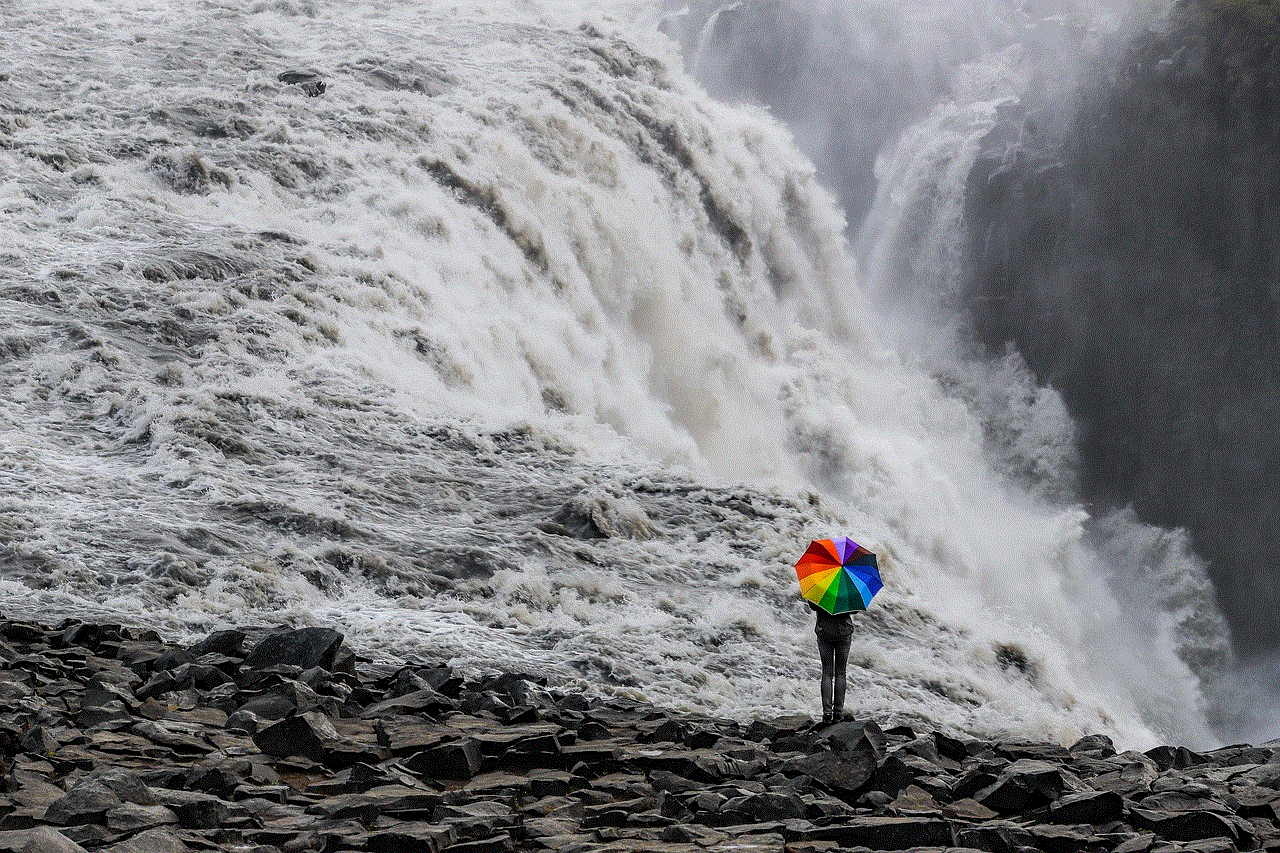what is google play instant apps
Google Play Instant Apps: A Revolutionary Way to Experience Apps
In today’s fast-paced world, time and convenience are highly valued. People are constantly on the go and are always looking for ways to make their lives easier. This is where instant apps come into play. With the rise of mobile technology, instant apps have become a game-changer in the world of mobile apps. And at the forefront of this innovation is Google Play Instant Apps.
Google Play Instant Apps, also known as Android Instant Apps, is a groundbreaking technology that allows users to experience mobile apps without the need to install them. This means that users can test out an app before committing to downloading it. With just a tap, users can access a small part of the app’s functionalities, giving them a taste of what the app has to offer. This eliminates the need for users to go through the entire installation process, which can be time-consuming and takes up valuable storage space on their devices.
The concept of instant apps was first introduced by Google at their annual developer conference, Google I/O, in 2016. It was officially launched to the public in 2017, and since then, it has been changing the way users interact with mobile apps. With instant apps, users can now access a wide range of apps from the Google Play Store without the need to download them. This has opened up a new world of possibilities for both users and developers.
One of the main advantages of instant apps is its convenience. With instant apps, users no longer have to go through the hassle of downloading and installing an app just to test it out. This is especially beneficial for users who are low on storage space or have limited data plans. With instant apps, users can quickly decide if an app is worth downloading or not, saving them time and resources.
Moreover, instant apps also benefit developers. With the traditional app installation process, developers face the challenge of getting users to download their app. This requires a lot of marketing efforts and can be a costly endeavor. With instant apps, developers can showcase their app’s functionalities and features directly to users, giving them a better chance of convincing them to download the full version of the app.
Another advantage of instant apps is its seamless integration with Google Play. Instant apps are available on the Google Play Store, and users can access them just like any other app. This makes it easier for users to discover new apps and for developers to reach a wider audience. Additionally, instant apps use the same APIs and development tools as traditional apps, making it easier for developers to create instant apps for their existing apps.
Furthermore, instant apps also provide a better user experience. As mentioned earlier, instant apps allow users to access a small part of the app’s functionalities. This means that users can quickly test the app’s performance and features without committing to the full version. This can be especially useful for apps that require a one-time use, such as booking a taxi, ordering food, or buying event tickets. Users no longer have to worry about deleting the app after they have used it once.
Moreover, instant apps also have the potential to increase user engagement. With traditional apps, users may be hesitant to download an app if they are unsure about its features or performance. With instant apps, users can instantly try out the app, making them more likely to engage with it. This can be beneficial for both users and developers, as it can lead to increased usage and potential in-app purchases.
Security is also a crucial aspect of instant apps. With traditional apps, users have to trust the app before they download it. This involves reading reviews, checking the developer’s reputation, and being cautious about the app’s permissions . With instant apps, users can try out the app without any risk. This is because instant apps run on a sandbox environment, which means that they are isolated from the user’s device. This ensures that the user’s personal data and device are not compromised.
In addition to its benefits, instant apps have also faced some challenges since its launch. One of the main concerns is the limited support for instant apps. Currently, instant apps are only available on Android devices running on Android 5.0 (Lollipop) or higher. This means that users with older devices are unable to access instant apps. However, with the increasing number of Android users upgrading to newer versions, this limitation is slowly becoming less of an issue.
Another challenge is the size of instant apps. While instant apps are smaller than traditional apps, they can still take up a significant amount of space on a user’s device. This can be a problem for users with low storage space, especially if they frequently use instant apps. However, Google is continuously working on reducing the size of instant apps to make them more accessible to all users.
In conclusion, Google Play Instant Apps has revolutionized the way we experience mobile apps. With its convenience, seamless integration, better user experience, and increased security, it has become a game-changer in the world of mobile apps. While it still faces some challenges, the future looks promising for instant apps. As more developers embrace this technology, we can expect to see a wider range of instant apps available on the Google Play Store. And with the continuous advancements in technology, it’s safe to say that instant apps are here to stay.
how to find out if someone has a snapchat
Snapchat has become one of the most popular social media platforms in recent years, with over 500 million active users worldwide. This app allows users to send photos, videos, and messages that disappear after a short period of time, making it a preferred choice for many when it comes to sharing personal content. With its growing popularity, it’s natural for people to wonder if someone they know has a Snapchat account. In this article, we will explore different ways to find out if someone has a Snapchat account.
1. Search for the person’s username
The simplest way to find out if someone has a Snapchat account is by searching for their username. If you know the person’s username, you can simply type it into the search bar on Snapchat and see if their profile appears. However, this method only works if the person has a public profile. If their profile is set to private, you will not be able to find them by searching their username.
2. Ask them directly
If you are friends with the person in real life, the easiest way to find out if they have a Snapchat account is by asking them directly. They can tell you their username or add you as a friend on the app. This method is not foolproof as the person may choose not to tell you their username or may not use the app at all.
3. Check their other social media profiles
Many people link their Snapchat account to their other social media profiles such as Facebook, Instagram , or Twitter . You can check if the person has linked their Snapchat account to any of these platforms. If they have, you can click on the link and be directed to their Snapchat profile. However, this method also has its limitations as the person may not have linked their Snapchat account to their other profiles.
4. Use a Snapchat username search website
There are several websites available that allow you to search for someone’s Snapchat username. These websites work by collecting data from public profiles and displaying them in a searchable database. All you have to do is enter the person’s name or phone number, and the website will show you their Snapchat username if it’s available. However, these websites are not always reliable, and the information provided may not be up-to-date.
5. Look for their Snapcode
Snapcode is a unique QR code assigned to each Snapchat user. You can scan this code using the Snapchat camera to add the person as a friend. If the person has shared their Snapcode on their other social media profiles or their website, you can scan it to add them on Snapchat. This method is more reliable than searching for their username as the code is unique to each user.
6. Search for them on Snapchat map
Snapchat map allows you to see the location of your friends on the app. If the person has enabled this feature, you can see their location on the map, which confirms that they have a Snapchat account. However, this method only works if the person has added you as a friend on the app.
7. Ask mutual friends
If you have mutual friends with the person, you can ask them if they have added the person on Snapchat. They can confirm if the person has a Snapchat account and share their username with you if they have it. This method is useful if you are not comfortable asking the person directly.
8. Check their phone
If you have access to the person’s phone, you can check if they have the Snapchat app installed. If they do, it’s safe to assume that they have an account. However, this method is not always feasible, and it may be considered a breach of privacy.
9. Use a reverse username search



If you have the person’s Snapchat username, you can use a reverse username search website to find out more information about them. These websites can provide you with details such as their name, email address, and other social media profiles linked to their username. This method can be useful if you want to verify the person’s identity before adding them on Snapchat.
10. Google their username
If you are unable to find the person on Snapchat, you can try searching their username on Google. If they have used the same username on other websites, it may show up in the search results. This method is not always reliable, but it’s worth a try.
In conclusion, there are several ways to find out if someone has a Snapchat account. However, not all methods are foolproof, and some may require you to have the person’s username or access to their phone. It’s always best to ask the person directly if you want to add them on Snapchat. Remember, it’s essential to respect people’s privacy and not use any of these methods to invade their personal space.
tumblr selfies gone wrong
Selfies have become a social media phenomenon, with platforms like Instagram, Snapchat, and TikTok providing the perfect outlet for people to showcase their best angles and filters. However, with the rise of selfies, there has also been a rise in selfies gone wrong. One particular platform where this is evident is Tumblr. Known for its artsy and alternative community, Tumblr has been a hub for selfies that often go beyond the norm. From bizarre poses to extreme editing, Tumblr selfies have taken on a life of their own, but not always for the better.
In this article, we will explore the world of Tumblr selfies gone wrong, and the impact they have on both the individuals posting them and the larger online community.
The Birth of Tumblr Selfies
Before we dive into the world of Tumblr selfies gone wrong, it’s important to understand how this trend came about. Tumblr was founded in 2007 as a microblogging platform, and by 2013, it had over 300 million active users. Unlike other social media platforms, Tumblr’s focus was on creativity and expression, making it the perfect space for individuals to showcase their unique style and personality.
As Tumblr gained popularity, so did the trend of selfies. Unlike Instagram, where selfies were often edited to perfection, Tumblr selfies embraced flaws and quirks. From artistic angles to playful filters, Tumblr selfies were all about being different and standing out from the crowd.
The Rise of Bizarre Poses
While Instagram was all about the perfect pose and the right lighting, Tumblr selfies took a different approach. The platform allowed users to express themselves in any way they wanted, and this often resulted in bizarre poses and angles. The hashtag #tumblrselfie has over 8 million posts, and scrolling through them, you’ll find people posing with books on their heads, hanging upside down, and even lying in a bathtub filled with milk.
These poses were not only meant to be visually appealing but also to convey a deeper meaning. Many Tumblr users saw these poses as a way to break free from societal norms and express themselves authentically. However, as the trend grew in popularity, it also became a competition to see who could come up with the most outlandish pose.
The Negative Impact on Mental Health
While Tumblr selfies may seem harmless, the pressure to constantly come up with unique and attention-grabbing poses took a toll on many users’ mental health. As the trend grew, so did the number of individuals experiencing anxiety, body image issues, and low self-esteem. The constant comparison to others and the need for validation through likes and reblogs led many to develop a toxic relationship with their bodies and appearance.
Moreover, as the trend shifted towards extreme and bizarre poses, there was also an increase in the number of people attempting dangerous stunts for the sake of a photo. From standing on the edge of a cliff to posing with wild animals, Tumblr selfies became a dangerous game, with individuals putting their lives at risk for a few minutes of online fame.
The Pressure to Edit



In addition to bizarre poses, Tumblr selfies also popularized the trend of extreme editing. While Instagram was known for its flawless and airbrushed selfies, Tumblr took it to a whole new level. The platform allowed for heavy editing and the use of filters that completely changed one’s appearance. This resulted in a distorted sense of reality, with individuals striving for an unattainable standard of beauty.
Moreover, with the rise of influencers and sponsored posts, there was added pressure to maintain a certain image. Many individuals resorted to editing their photos to fit in with the aesthetic of popular Tumblr bloggers, leading to a homogenization of appearances on the platform.
The Impact on Diversity and Inclusivity
One of the most concerning aspects of Tumblr selfies gone wrong is the impact on diversity and inclusivity. While the platform was known for its acceptance and celebration of different body types, races, and gender identities, the trend of extreme editing and homogenization of appearances eroded this foundation.
As individuals strived for a certain aesthetic, many marginalized communities were left out. The pressure to conform to a specific beauty standard on Tumblr further perpetuated the idea that only one type of appearance was desirable, leading to the exclusion and erasure of diverse individuals.
The Rise of Eating Disorders and Body Dysmorphia
As the trend of Tumblr selfies continued to grow, so did the number of individuals struggling with eating disorders and body dysmorphia. With the constant exposure to heavily edited and unrealistic images, many individuals developed a distorted view of their bodies, leading to unhealthy behaviors and thoughts.
Moreover, the pressure to maintain a certain appearance on Tumblr also resulted in individuals developing an obsession with their online presence. The need for constant validation and comparison to others’ edited photos led to a toxic cycle of self-doubt and body shaming.
The Impact on Teenagers and Adolescents
Perhaps the most concerning aspect of Tumblr selfies gone wrong is the impact on teenagers and adolescents. As the platform became a hub for extreme editing and bizarre poses, it also became a breeding ground for harmful trends and challenges. From the infamous “thigh gap challenge” to the “collarbone challenge,” Tumblr selfies perpetuated the idea that only a certain body type was desirable, leading to an increase in body image issues among young individuals.
Moreover, the pressure to fit in and gain validation through likes and reblogs also resulted in many teenagers developing an unhealthy relationship with social media. The constant exposure to unrealistic images and the need to maintain a certain image online was detrimental to their mental health and well-being.
The Call for Change
As the negative impact of Tumblr selfies became more apparent, many individuals within the community called for change. Bloggers and influencers started using their platforms to promote body positivity and self-love, encouraging others to embrace their flaws and imperfections. The hashtag #realselfie became popular, with individuals sharing unedited and unfiltered selfies to promote body diversity and inclusivity.
Moreover, Tumblr itself took steps to address the issue. In 2016, the platform banned the hashtag #thinspiration, which was often used to promote eating disorders and unhealthy weight loss. It also implemented a policy that prohibited the promotion of self-harm and dangerous behavior.
Moving Forward
While Tumblr selfies gone wrong may seem like a thing of the past, the impact of this trend is still felt today. The pressure to maintain a certain image online and the constant comparison to others has resulted in many individuals developing a negative relationship with their bodies and social media.
It’s important to remember that social media is not a reflection of reality, and that what we see online is often heavily edited and curated. Instead of striving for unattainable standards, we should embrace our unique selves and promote inclusivity and diversity within the online community.



In conclusion, Tumblr selfies gone wrong may have started as a harmless trend, but its impact on individuals’ mental health and well-being cannot be ignored. It’s time for us to move away from unrealistic beauty standards and embrace body positivity and self-love. Let’s use our online platforms to uplift and celebrate each other, rather than perpetuating harmful trends and behaviors.